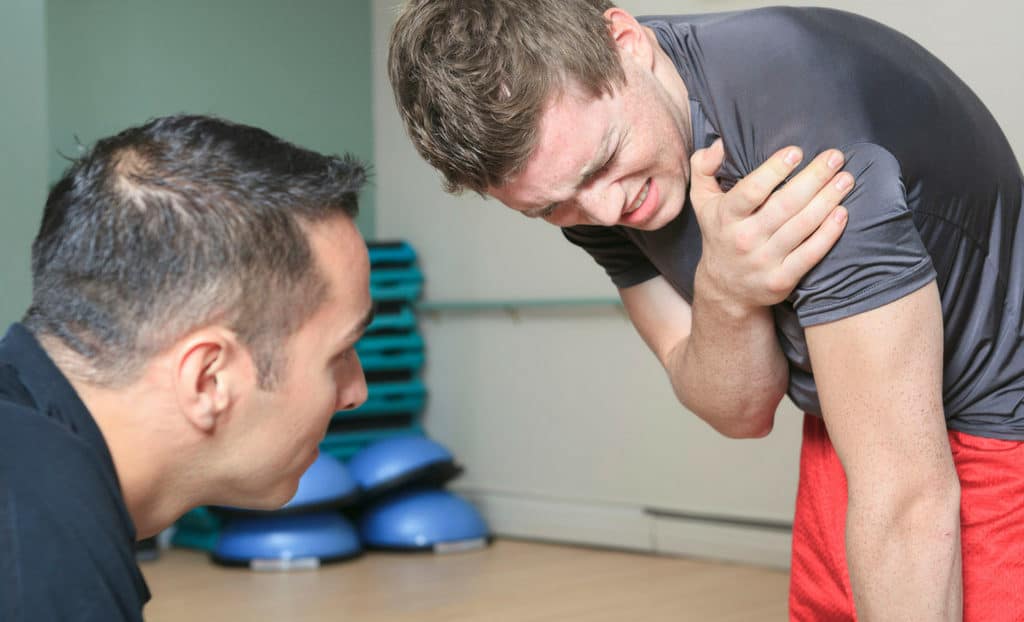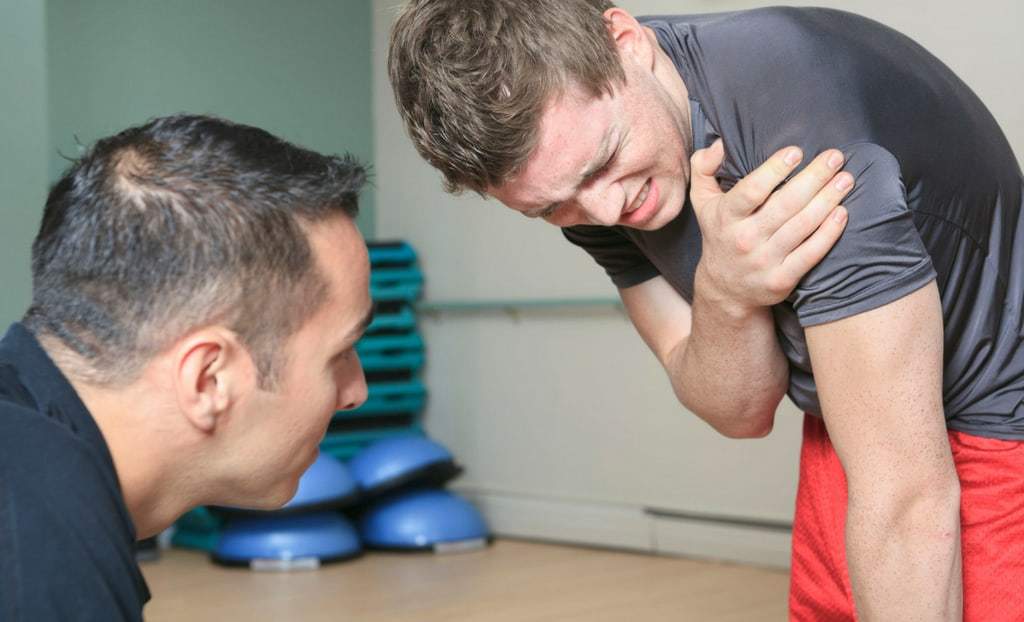While you can try your best to avoid injuries, unfortunately, most people will experience them once in a while. If you are injured, then it’s best to see a physical therapist or professional that can properly treat it. However, there are some common gym injuries, and here are some solutions to treat them.
How to Treat These Common Gym Injuries
1. Muscle Pulls and Strains
Other common gym injuries include pulling or straining your muscle. This is when a muscle is torn or overstretched. While this can occur anywhere on your body, the most common places are straining your hamstring, or neck and back.
It can occur due to overexertion, being overstretched, and not warming up properly.
Pulling or straining your muscle will limit your mobility and can cause pain once you hit a certain threshold. You may also experience stiffness, swelling or weakness. It can also range from mild to severe.
How to treat it
Depending on how severe it is, there are different ways to treat it. Resting the affected muscle is paramount. It can be tempting to “work through the pain”, however, this can make it worse. So take a couple of days off before slowly starting to incorporate movement with the muscle. Bear in mind though, too much rest can also cause stiffness so you don’t want to keep it immobile for long. Try to find a good balance.
When you do start using it again, don’t push it too much. Overdoing it can exacerbate it.
How to prevent it
Warming up is crucial in preventing these common gym injuries. You need to properly prepare your body for your training session instead of jumping straight in. If your muscles aren’t warm, then you risk tearing it.
A good warmup should be specific. For example, if you’re planning on squatting, then do some air squats to mimic the same movement that you’ll be doing, just without the weight. It may seem tedious but taking the time to warm up can really improve your athletic performance, while also prevent muscle strains and pulls.
Listening to your body and knowing the difference between pain and good pain is important. Good pain is when you’re challenging yourself but not going over your threshold. The bad pain that you don’t want is when you’re hurting yourself to the point where you can potentially pull or strain a muscle.
2. Runner’s Knee
A common gym injury is Runner’s Knee or patellofemoral pain syndrome. This is when you feel pain or soreness around the kneecaps or have trouble sitting, standing, walking. The pain may be exacerbated when you try to walk downwards as well.
It occurs when the kneecap (patella) is misaligned. Weak or tight thigh muscles and overuse of the knee can also cause it.
Despite the name, runner’s are not the only people who can experience this, although it is prevalent among them because running places much demand on the knees. Any other exercise that requires a lot of use of the knee can cause it.
How to treat it
If you feel pain in and around the knee then the first thing that you can do is rest it. Take 3-4 days of training off. If you do exercise, then try to avoid training that involves the knee such as lunging and squatting.
Another good idea is to ice it. Icing it will assist in reducing any swelling.
How to prevent it
Find a good pair of shoes that can offer really great support. This will help reduce the demand on your knee so that you can decrease the risk of getting runner’s knee again. Arch supports will also help with this as well.
Incorporate strengthening exercises into your fitness routine for your knee. Work on your lower body such as your quads, lower back, hips, and abs. This can strengthen the areas around the knee and reduce the stress placed on them. Try the plank and glute bridges.
3. Sprained Wrist
The wrist is an easy area to overload and put too much pressure on. Because it is used in a variety of exercises and takes a lot of weight, wrist strain is a common gym injury.
There may be swelling and tenderness. It’ll also hurt to put pressure on your wrists.
You can get a sprained wrist through repetitive movements that can cause chronic wrist strain. On the other hand, acute wrist strain is when it occurs suddenly such as bending the wrist past the normal threshold.
How to treat it
Ice your wrist to reduce swelling. Also, make sure you rest it. Adding more pressure to it will only make it worse. This means that you should avoid any exercises that involve putting stress on or bending the wrist.
How to prevent it
If you’re prone to wrist strains, then try modified versions of your favorite exercises. Front squat by crossing your arms across your chest instead of using your wrists. Push-ups can also be done by folding your hands into fists so that your wrists remain straight instead of bent.
Wearing a wrist strap can also really assists in taking the pressure off the wrist.
See a professional
If you are experiencing one of these common gym injuries do not improve, then see a professional physiotherapist or doctor. Your physio can properly examine you and provide specific solutions to your needs.
Workout with Jefit
Want a workout app that can recommend some great exercises, help you schedule your workouts, and offers a supportive online community? Jefit is an app that can do all those things and more. It comes with an extensive exercise library, personalized workout planner, as well as a members-only Facebook group where you can connect and interact with your fellow Jefit members.
Click here to become part of the community now!
- Helpful Tips to Understand the Differences Between Macronutrients - February 20, 2024
- 5 Strength Training Disciplines That Will Build Muscle - December 29, 2023
- How Many Times a Week Should You Workout? - December 27, 2023






You have to tack care of your self in the gym, you explain every thing very well, thanks for the post http://neverhaveieverquestions.org/would-you-rather-questions-hard/
Thanks Juhi – yes safety first if you’re still able to visit your gym. Check back again soon. Thank you!
Pingback: Master the Lat Pulldown Exercise for a Strong Back | Jefit - #1 Gym workout app